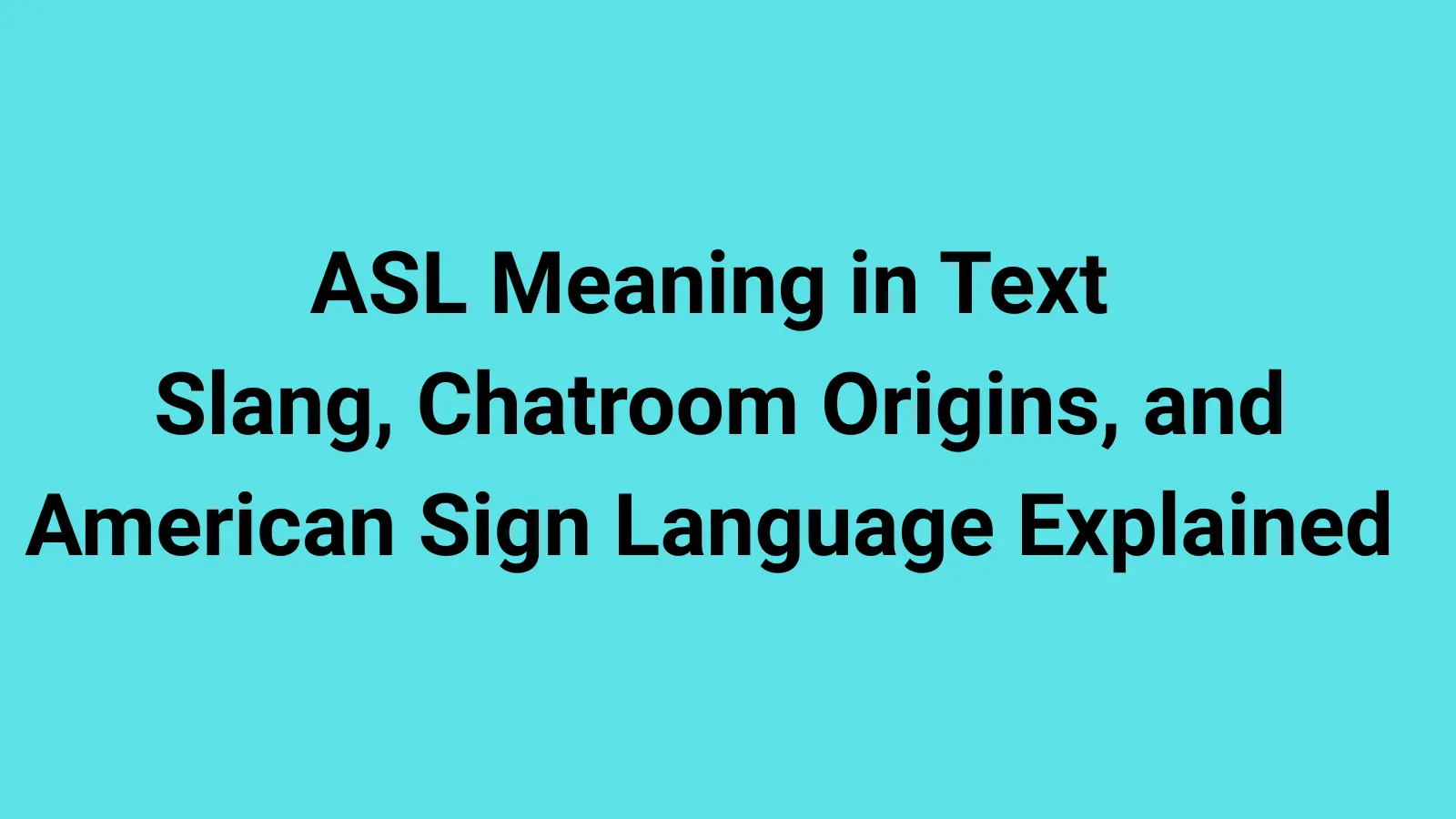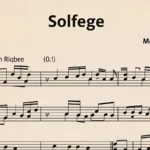If you’ve ever been in a chat and someone dropped “ASL?” and you froze for a second, wondering if it was a typo—don’t worry, you’re in the right place.
Abbreviations like ASL have a history in internet culture that goes back decades, and they’ve changed meaning more than once.
This complete guide will break down ASL meaning in text, its origins, its uses in different communities, how to spot the intended meaning in context, and how to use it politely yourself.
We’ll cover meanings for teens, professionals, casual users, and even those encountering it for the first time.
Plus, you’ll get real-life examples, etiquette tips, and related slang to round out your texting vocabulary.
What Does “ASL” Mean in Text? (The Short Version)
In texting and online messaging, ASL can mean:
- Age, Sex, Location – A classic internet chat abbreviation used to ask basic info about someone, especially in early online chatrooms.
- As Hell – A modern slang form used to emphasize something (“I’m tired asl” = “I’m really tired”).
- American Sign Language – The primary language of the Deaf community in the United States and parts of Canada.
Which meaning applies depends heavily on context—and this is why so many people get tripped up. The same three letters can go from casual slang to a respectful language reference in seconds.
Why “ASL” Can Mean So Many Things
Abbreviations survive when they’re short, versatile, and easy to remember. “ASL” checks all three boxes:
- Short: Three letters, easy to type fast.
- Versatile: Works as a question, a descriptor, or a proper noun.
- Memory-friendly: Sticks in your brain after a single use.
Over time, online culture gave “ASL” different lives:
- 1990s–2000s: “Age, Sex, Location?” was a quick intro in chatrooms.
- 2010s–2020s: Teens started using “asl” lowercase to mean “as hell.”
- Always: In formal or educational contexts, “ASL” still means “American Sign Language.”
ASL Meaning in Text for Teens (Modern Slang)
Today’s teen texting culture often uses asl as slang for “as hell”—a way to emphasize:
- “That movie was boring asl.” → Really boring.
- “She’s cute asl.” → Very cute.
- “I’m tired asl rn.” → Extremely tired right now.
Tone tips for teens and casual users:
- Usually lowercase “asl.”
- Rarely has punctuation.
- Works like “super,” “really,” or “so” in a sentence.
- Never confused with “Age, Sex, Location” in friend group chats—it’s purely emphasis.
ASL Meaning in Text for Professionals
In professional environments, ASL almost always means American Sign Language—especially in education, accessibility, or diversity/inclusion conversations.
Example:
- “We need an interpreter fluent in ASL for the conference.”
- “Offering ASL services will expand our event’s accessibility.”
At work:
- Avoid using ASL to mean “as hell” or “age, sex, location”—it’s unprofessional and confusing.
- Spell out “American Sign Language” the first time you mention it, then use ASL.
ASL Meaning in Text for Casual Users & Families
In family or mixed-age chats, “ASL” can mean:
- Age, Sex, Location (older generations may recall this from early chatrooms).
- American Sign Language (common in educational or advocacy contexts).
- Less often, “as hell” (younger family members may slip this into slangy messages).
Tip: If you’re unsure if your family will get the slang version, skip it or explain it once.
The Original Chatroom Meaning: Age, Sex, Location
Before texting slang exploded, ASL? was a staple in AOL, Yahoo, and MSN chatrooms. It was a quick icebreaker:
- Age: How old are you?
- Sex: Male or female? (Gender identity language was less evolved online back then.)
- Location: Where are you from?
Example:
- Stranger: “Hey, asl?”
- You: “17/f/NYC” → 17 years old, female, in New York City.
Why it faded:
- Privacy and safety concerns—people became more cautious about sharing personal info.
- Shift toward profiles that already displayed age/location.
- Change in slang priorities—people started using emojis, GIFs, and richer intros.
The Slang Shift: ASL as “As Hell”
By the mid-2010s, social media (Twitter, Instagram, TikTok) popularized asl as “as hell”:
- “He’s fine asl.” → Very attractive.
- “It’s cold asl out here.” → Extremely cold.
Features of this usage:
- Usually typed in lowercase.
- No punctuation between the adjective and “asl.”
- Works best in casual, humorous, or exaggerated contexts.
ASL as American Sign Language
American Sign Language is a rich, complete language with its own grammar and structure—not just “English on the hands.” In any educational, activist, or Deaf community context, ASL is taken seriously:
Example:
- “She’s studying ASL at university.”
- “The event offers ASL interpreters for attendees.”
Key point: This meaning is formal and respected. Avoid making slang jokes with “ASL” in contexts where it’s about the language—it can come off as disrespectful.
How to Tell Which ASL Someone Means in Text
Here’s a quick context checklist:
- Casual friend chat / lowercase / emphasis → “as hell.”
- Older internet style or random DMs from strangers → “Age, Sex, Location?”
- Educational / accessibility / event / Deaf community context → “American Sign Language.”
- Punctuation or format clue:
- “asl?” alone in a message = likely “Age, Sex, Location?”
- “tired asl” = “as hell.”
- “ASL interpreter” = American Sign Language.
- “asl?” alone in a message = likely “Age, Sex, Location?”
Real-Life Examples of ASL in Text
As Hell
- “That test was hard asl.”
- “Hungry asl rn.”
- “She’s smart asl.”
Age, Sex, Location
- “Hey, asl?”
- “25/m/Toronto.”
- “asl pls” (ASL please).
American Sign Language
- “He’s an ASL interpreter for the conference.”
- “We offer ASL classes online.”
- “Learning ASL has been so rewarding.”
Using ASL Without Confusion
Do:
- Match your usage to the audience.
- Explain it if you think they might misunderstand.
- Use context clues in your own messages to make meaning obvious.
Don’t:
- Use “ASL” as “as hell” in professional or mixed-age spaces.
- Drop “ASL?” (Age, Sex, Location) to strangers online—it’s outdated and can be seen as invasive.
- Joke about “ASL” when it’s about American Sign Language.
ASL Meaning in Text vs. Similar Abbreviations
- AF – As F*** (similar to “asl” emphasis but more explicit).
- BTW – By The Way.
- IDK – I Don’t Know.
- TMI – Too Much Information.
- BRB – Be Right Back.
- IRL – In Real Life.
How ASL Evolved with Internet Generations
1990s–2000s: Chatrooms dominate. “ASL?” is a quick personal info ask.
2010s: Memes, Vine, and Twitter turn “asl” into a comedic emphasis.
Always: Deaf community continues using ASL as American Sign Language.
The internet has essentially layered meanings over time rather than replacing them.
ASL in Safety and Etiquette Contexts
- If you see “ASL?” from a stranger in a DM, be cautious—don’t give personal details.
- In activism or events, treat “ASL” references as you would a spoken language—respectfully.
- In slang, keep audience in mind to avoid confusion or offense.
Quick Reference Table: ASL Meanings
| Context | Meaning | Example |
| Friend slang | As Hell | “That’s funny asl.” |
| Stranger in old chat style | Age, Sex, Location | “asl?” |
| Educational / Deaf community | American Sign Language | “ASL interpreter needed.” |
FAQ: ASL Meaning in Text
Q: Is ASL rude?
A: “ASL” as “Age, Sex, Location” can be invasive; “asl” as slang is casual; “ASL” as a language is neutral and respectful.
Q: Should I use “asl” for emphasis at work?
A: No—choose “really” or “extremely.”
Q: How do I avoid confusion?
A: Add context: “Learning ASL (American Sign Language)” or “tired asl rn”.
Conclusion: Reading and Using ASL Like a Pro
The meaning of ASL in text hinges on audience, context, and tone. For friends, it might mean “as hell.” In formal contexts, it’s always “American Sign Language.”
And in old-school chats, it was “Age, Sex, Location.” Knowing which is which helps you avoid awkward misunderstandings and keeps your messages clear, respectful, and on-point.











